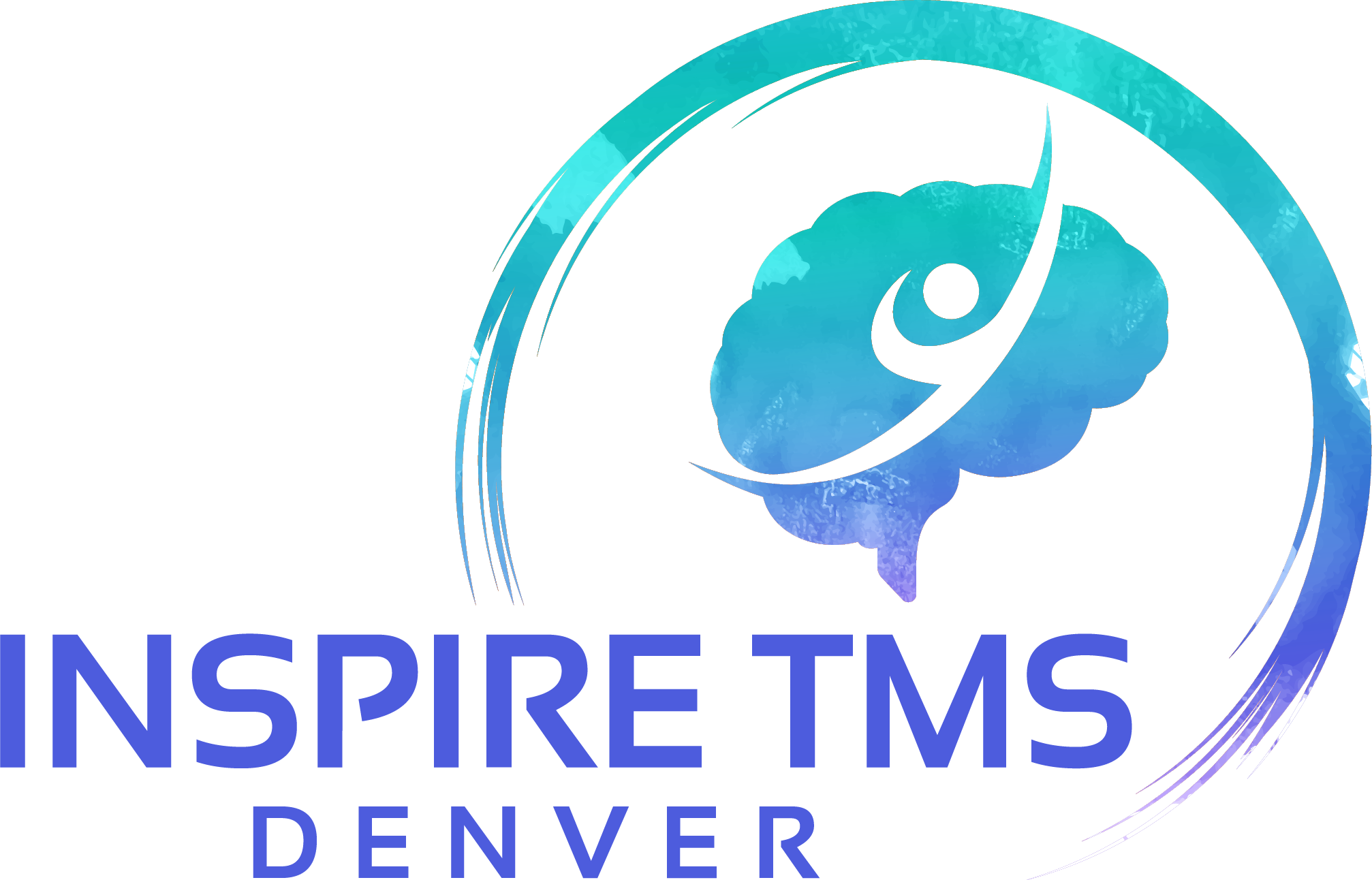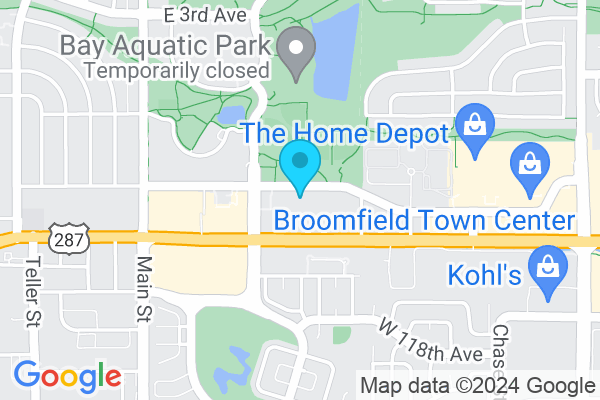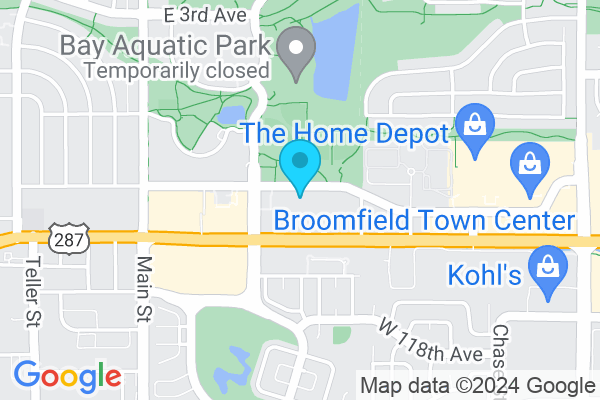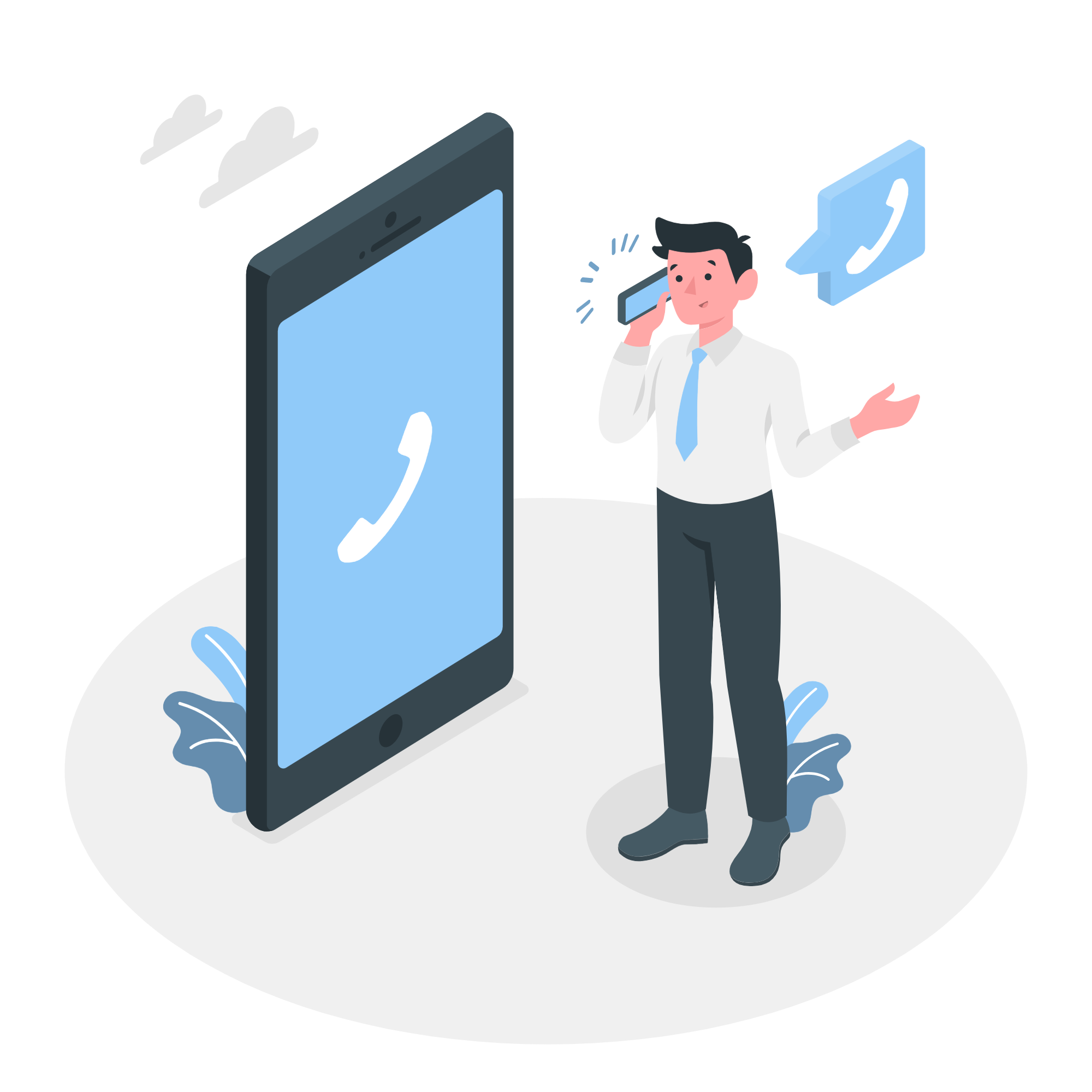How Does TMS Therapy Work?
TMS-Transcranial Magnetic Stimulation, utilizes magnetic fields or pulses, somewhat similar to a MRI, to stimulate electrical connections within the brain.
How Does TMS Therapy Work?
TMS-Transcranial Magnetic Stimulation, utilizes magnetic fields or pulses, somewhat similar to a MRI, to stimulate electrical connections within the brain.
Transcranial Magnetic Stimulation-TMS, is a relatively new treatment in the fight against common mental health conditions such as depression and anxiety. It has also been used to treat and/or involved in research relating to many other psychiatric and neurologic conditions such as OCD, Bipolar, PTSD, stroke rehabilitation, Parkinson’s, Dementia, chronic pain, tinnitus, and more.
Transcranial
Refers to passing across the skull.
Magnetic
Refers to a substance with the ability to repel or attract magnetic energy - this is important when we talk about TMS therapy as magnetic fields can induce or change electrical fields.
Stimulation
Activation of a pathway - here we are referring to the activation of neurons in the brain.
Transcranial Magnetic Stimulation-TMS, is a relatively new treatment in the fight against common mental health conditions such as depression and anxiety. It has also been used to treat and/or involved in research relating to many other psychiatric and neurologic conditions such as OCD, Bipolar, PTSD, stroke rehabilitation, Parkinson’s, Dementia, chronic pain, tinnitus, and more.
Transcranial
Refers to passing across the skull.
Magnetic
Refers to a substance with the ability to repel or attract magnetic energy - this is important when we talk about TMS therapy as magnetic fields can induce or change electrical fields.
Stimulation
Activation of a pathway - here we are referring to the activation of neurons in the brain.
Putting this together, we see that we are using a magnetic field to stimulate brain tissue across the skull. This magnetic field is created by passing electricity from your typical wall outlet to a small transformer, through the TMS machine to set the frequency and additional parameters of electrical activity, and finally on to wrapped magnetic wiring that is encased in a plastic shell. The plastic shell is placed tangentially to the scalp and the fluctuating electric current induces an electromagnetic field as it passes through the wiring in a perpendicular direction, 2-3 cm into the outer cortex of the brain. These magnetic pulses can excite or depress neurons depending on the protocol. In other words, we are using a magnetic field to safely transmit a small amount of electrical activity to a small area of the brain.
How is this then helpful in depression or anxiety?
The brain communicates and forms functional circuits through electricity. Billions of electrical connections communicate to conduct voluntary and involuntary life functions including things as simple as breathing, up to more complex actions like language, thought, memories and actions. Complex and connected ‘circuits’ also cause emotions and, in turn, the way we respond to and manage these emotions. Sometimes these pathways can become awry and the electrical activity is not functioning as it should. Research and brain imaging studies have shown that some areas become dormant or deficient in activity and others excited and hyperactive - such as in depression or anxiety, respectively.
As noted, TMS-Transcranial Magnetic Stimulation, utilizes magnetic fields or pulses, somewhat similar to a MRI, to stimulate electrical connections within the brain. There are many theories as to different ways that TMS benefits brain activity in those with depression, anxiety, or other conditions, but we know for sure that TMS changes neuronal activity. Depending on the type of stimulation that is administered, TMS can ‘wake up’ sleepy neurons that are low in electrical activity (such as in depression) or inversely ‘calm’ agitated neurons that are overactive (such as in anxiety).
Regardless of treatment protocol, the TMS team monitors tolerability to the treatment and can adjust aspects of treatment to limit discomfort. There are no systemic side effects to treatment, but occasionally patients experience scalp tenderness at the stimulation site or headache. This typically resolves with adjustment to treatment and dissipates over the first few sessions. Earplugs are worn for precaution as there is a tapping noise during magnetic pulses. It is not extremely loud and different devices have a more vs less prominent noise level (Inspire TMS Denver uses a device with lower decibel readings).
The treatment is done in a comfortable outpatient office setting. Patients do not require any medication or sedation prior to, during, or after treatment and simply lie in a reclining chair while receiving treatment and can even watch TV, listen to music, relax or meditate, or talk with their
TMS therapist. After a treatment session, patients can drive and return to work or back home with no limitations. A course of TMS treatments is typically around 36 sessions and takes place over six weeks with an additional several weeks for tapering off treatment. Response typically takes a few weeks, but time to improvement varies from patient to patient.
What does a Treatment Involve?
Once being determined a good candidate for TMS by a Psychiatrist, a particular TMS treatment protocol is selected to match the condition and desired effect. In depression, this involves targeting an area called the DLPFC (dorsolateral prefrontal cortex). This area consistently shows depressed activity when comparing individuals who suffer from depression to those who do not have depression.
A certified TMS Psychiatrist will then determine the right intensity of treatment unique to a particular individual through a process called ‘mapping’ - or motor threshold determination. This determines just the right amount of energy to cause electrical firing, but not more than is necessary. The magnetic treatment coil can then be placed at the DLPFC and a full treatment session can begin. The protocol entered into the TMS device is started and pulses occur every few seconds (depending on the protocol) and then involve a lull in stimulation for ten seconds or so for neurons to reset. There are different times for treatment, but most commonly this takes 18.5 to as little as three minutes to complete. Typically treatments that are excitatory involve higher frequency (10 Hz or more) and intermittent stimulation while those that are aiming for inhibition of neurons use lower frequency (1 Hz) and more continuous stimulation.
Can anyone utilize TMS?
There are few contraindications to TMS, some of the most important are:
Epilepsy or history of seizures
TMS has the potential to induce seizures. The risk of seizure is very low, however, and similar to antidepressant use for the general population. Most studies point to seizure in only 1 in 30,000 treatments or more.
Medical implants
Any device that could be influenced by a magnetic field or is metal. Similarly, any other foreign object with metal near the treatment site.
Pregnancy or breastfeeding
Studies are currently underway to verify safety for TMS in these populations, but it hasn’t been confirmed yet.A screening evaluation is always performed to review all contraindications. Additional contraindications are listed in our review of insurance coverage criteria in the Pricing Guide section.
Putting this together, we see that we are using a magnetic field to stimulate brain tissue across the skull. This magnetic field is created by passing electricity from your typical wall outlet to a small transformer, through the
TMS machine
to set the frequency and additional parameters of electrical activity, and finally on to wrapped magnetic wiring that is encased in a plastic shell. The plastic shell is placed tangentially to the scalp and the fluctuating electric current induces an electromagnetic field as it passes through the wiring in a perpendicular direction, 2-3 cm into the outer cortex of the brain. These magnetic pulses can excite or depress neurons depending on the protocol. In other words, we are using a magnetic field to safely transmit a small amount of electrical activity to a small area of the brain.
How is this then helpful in depression or anxiety?
The brain communicates and forms functional circuits through electricity. Billions of electrical connections communicate to conduct voluntary and involuntary life functions including things as simple as breathing, up to more complex actions like language, thought, memories and actions. Complex and connected ‘circuits’ also cause emotions and, in turn, the way we respond to and manage these emotions. Sometimes these pathways can become awry and the electrical activity is not functioning as it should. Research and brain imaging studies have shown that some areas become dormant or deficient in activity and others excited and hyperactive - such as in depression or anxiety, respectively.
As noted, TMS-Transcranial Magnetic Stimulation, utilizes magnetic fields or pulses, somewhat similar to a MRI, to stimulate electrical connections within the brain. There are many theories as to different ways that TMS benefits brain activity in those with depression, anxiety, or other conditions, but we know for sure that TMS changes neuronal activity. Depending on the type of stimulation that is administered, TMS can ‘wake up’ sleepy neurons that are low in electrical activity (such as in depression) or inversely ‘calm’ agitated neurons that are overactive (such as in anxiety).
Therapy success rate
What can the STAR*D trial tell us about therapy success? Step 2 of the study involved the option of adding cognitive behavioral therapy (CBT) to the 2nd medication trial. The remission rate for these individuals was still only 31%, however, and it took an average of 55 days to reach this remission. There are many other studies that point to therapy as an effective treatment for mild to moderate depression, but there is less convincing evidence for response to therapy in
severe major depression.⁵ Patients can also attest to the fact that the quality and success rate of therapy can vary widely between counselors. There is also a considerable time commitment needed for therapy, often entailing months or even years, and each session typically takes an hour or longer.
What does a Treatment Involve?
Once being determined a good candidate for TMS by a Psychiatrist, a particular TMS treatment protocol is selected to match the condition and desired effect. In depression, this involves targeting an area called the DLPFC (dorsolateral prefrontal cortex). This area consistently shows depressed activity when comparing individuals who suffer from depression to those who do not have depression.
A certified TMS Psychiatrist will then determine the right intensity of treatment unique to a particular individual through a process called ‘mapping’ - or motor threshold determination. This determines just the right amount of energy to cause electrical firing, but not more than is necessary. The magnetic treatment coil can then be placed at the DLPFC and a full treatment session can begin. The protocol entered into the TMS device is started and pulses occur every few seconds (depending on the protocol) and then involve a lull in stimulation for ten seconds or so for neurons to reset. There are different times for treatment, but most commonly this takes 18.5 to as little as three minutes to complete. Typically treatments that are excitatory involve higher frequency (10 Hz or more) and intermittent stimulation while those that are aiming for inhibition of neurons use lower frequency (1 Hz) and more continuous stimulation.
Regardless of treatment protocol, the TMS team monitors tolerability to the treatment and can adjust aspects of treatment to limit discomfort. There are no systemic side effects to treatment, but occasionally patients experience scalp tenderness at the stimulation site or headache. This typically resolves with adjustment to treatment and dissipates over the first few sessions. Earplugs are worn for precaution as there is a tapping noise during magnetic pulses. It is not extremely loud and different devices have a more vs less prominent noise level (Inspire TMS Denver uses a device with lower decibel readings).
The treatment is done in a comfortable outpatient office setting. Patients do not require any medication or sedation prior to, during, or after treatment and simply lie in a reclining chair while receiving treatment and can even watch TV, listen to music, relax or meditate, or talk with their
TMS therapist. After a treatment session, patients can drive and return to work or back home with no limitations. A course of TMS treatments is typically around 36 sessions and takes place over six weeks with an additional several weeks for tapering off treatment. Response typically takes a few weeks, but time to improvement varies from patient to patient.
Can anyone utilize TMS?
There are few contraindications to TMS, some of the most important are:
Epilepsy or history of seizures - TMS has the potential to induce seizures. The risk of seizure is very low, however, and similar to antidepressant use for the general population. Most studies point to seizure in only 1 in 30,000 treatments or more.
Medical implants - any device that could be influenced by a magnetic field or is metal. Similarly, any other foreign object with metal near the treatment site.
Pregnancy or breastfeeding - studies are currently underway to verify safety for TMS in these populations, but it hasn’t been confirmed yet.A screening evaluation is always performed to review all contraindications. Additional contraindications are listed in our review of insurance coverage criteria in the Pricing Guide section.
TMS was given FDA clearance for treating Treatment Resistant Major Depression in 2008 and more recently for for OCD and smoking cessation. It is non-invasive as it uses electromagnetic fields to change electrical activity of neurons at the surface of the brain. This prevents systemic side effects and makes the procedure well tolerated and generally safe for use. It provides a great treatment option for individuals suffering from treatment resistant psychiatric conditions or intolerance to medications.
Inspire TMS Denver is proud to offer this treatment to our patients, hope you learn more from this website, and consider utilizing TMS if is the right next step for you or a loved one. Browse our other pages for additional information and resources regarding TMS therapy, our approach at Inspire TMS, and why you should contact us if considering TMS treatment. Consider utilizing our free phone consultation pathway here or call to schedule today.
References
¹ Mental Health - Our World In Data
³ Products - Data Briefs - Number 377 - September 2020 (cdc.gov)
⁴ https://www.nimh.nih.gov/funding/clinical-research/practical/stard/allmedicationlevels
⁵ https://www.aafp.org/afp/2006/0101/p83.html
⁶https://www.sciencedirect.com/science/article/pii/S0924933817329176
⁸https://pubmed.ncbi.nlm.nih.gov/11255384/
⁹https://www.ncbi.nlm.nih.gov/pmc/articles/PMC3799066/
¹⁰https://pubmed.ncbi.nlm.nih.gov/22689344/
¹² https://neurostar.com/hcp/efficacy/neurostar-efficacy-results/


Meet Dr. Clinch
Inspire TMS Denver was founded by Sam Clinch, MD, a board-certified Psychiatrist with over 10 years’ experience in the field. He opened Inspire TMS Denver after realizing the limitations of medications and counseling for a significant portion of his patients. He dove back into the latest literature on advanced treatments and saw that TMS was providing solutions for those with treatment resistance. He has provided TMS services at the VA during his residency training, completed a fellowship at Duke University in TMS, and received additional TMS training through the Clinical TMS Society.
His peers recognized him as a 5280 Top Doctor in Psychiatry for 2020 and he is a member of the American Psychiatric Association, Colorado Psychiatric Association, and the Clinical TMS Society. He was a finalist for Teacher of the Year for the CO Permanente Medical Group in 2017 and the Behavioral Health Provider of the Year for the Hidden Lake Medical Office in 2017.
Find Us Here!
Meet Dr. Clinch

Inspire TMS Denver was founded by Sam Clinch, MD, a board-certified Psychiatrist with over 10 years’ experience in the field. He opened Inspire TMS Denver after realizing the limitations of medications and counseling for a significant portion of his patients. He dove back into the latest literature on advanced treatments and saw that TMS was providing solutions for those with treatment resistance. He has provided TMS services at the VA during his residency training, completed a fellowship at Duke University in TMS, and received additional TMS training through the Clinical TMS Society.
His peers recognized him as a 5280 Top Doctor in Psychiatry for 2020 and he is a member of the American Psychiatric Association, Colorado Psychiatric Association, and the Clinical TMS Society. He was a finalist for Teacher of the Year for the CO Permanente Medical Group in 2017 and the Behavioral Health Provider of the Year for the Hidden Lake Medical Office in 2017.
Find Us Here!
Still unsure? That's okay!
Find out with our depression/anxiety quiz
No cost, secure, and confidential.

or
Still unsure? That's okay!
Find our with our depression/anxiety quiz
No cost, secure, and confidential.

or

Ⓒ 2023 — Inspire TMS Denver — All rights reserved

Contact Info
Address: 340 E 1st Ave #333
Broomfield, CO 80020
Phone: (720) 893-8352
Email: info@inspiretmsdenver.com
Business Hours
Mon: 8am - 5pm
Tues: 8am - 5pm
Wed: 8am - 5pm
Thurs: 8am - 5pm
Fri: 8am - 5pm
Sat/Sun: Closed






